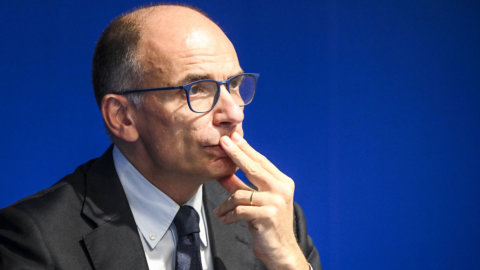It raised a lot of doubts the national strike of metalworkers for the renewal of the 2020-2022 contract. The parties have not yet reached an agreement after nine months of negotiations, albeit interrupted by the substantial paralysis of activities caused by the lockdown in the first half of the year. The objections mainly concerned abstention from work in a context as serious as the current one, in which we have to deal with the closures already ordered in key regions for the manufacturing industry classified as a red zone and with those that can be decided within a few weeks.
Beyond this action, which has assumed a substantially demonstrative character and which ended up in a shadow with respect to the health problems that re-emerged with an unexpected arrogance, the merit aspects of such an important dispute deserve some reflection. The metalworkers' unions platform was developed in a socio-economic context that belongs to the past, albeit recent, which has been overwhelmed by the events that have occurred in the meantime and which have ousted from history a claim book characterized by heavy wage demands at a national level.
Already when the platform was presented it was evident that it provided for an approach inconsistent with the solemn agreements contained in the 2018 Factory Pact, in which the same role that this level has played since the 1993 Protocol was reserved for national category bargaining: to ensure uniform and minimum regulatory and economic treatments that guaranteed the defense of the purchasing power of wages.
The platform now under discussion from the outset expressed a line of rupture with the contractual structure, confirmed only a few months earlier (on March 9, 2018, when the new framework agreement was signed). In fact, the request for an 8% salary increase, which should have compensated for the low diffusion of company bargaining, especially in small businesses, but which in fact gave a primary role to national category bargaining.
The platform was by no means reticent in this regard: "We reconfirm - it was written - the model resulting from the National Collective Labor Agreement of 26 November 2016 which produced the reconfirmation of the two levels of bargaining and numerous contractual innovations for workers, but the enforceability of this model , introduced on an experimental basis, has had an effectiveness far below expectations in spreading decentralized bargaining and with it the ability to distribute profits and productivity”.
Countermand, comrades. So it was back to remunerate a productivity that – at the category level – is a pure invention, only because it had not been possible to negotiate it in the heart of the processes where it is produced. This setting explicitly constituted an about-face compared to the very innovative one of the contents of the previous renewal (2017-2019). In contract stipulated at the time (November 2016), the prevailing amount of resources (with the exception of those intended for necessarily national and sectoral welfare initiatives, such as supplementary pension and health insurance) was distributed at the company level.
The national contract retained a role of protection of the purchasing power of wages, but would have exercised these functions ex post, or once an effective difference with the trend of the salaries had emerged. It then made its entry into collective bargaining the subjective right to training, with the aim of placing human capital in a position to make their knowledge rapidly evolve according to the progress of the various sectors of the economy through the requalification, reconversion and enrichment of knowledge.
At a time like the present, it makes no sense to return to the old conception of the national contract as an opportunity for wage advancement – well beyond inflation – for an entire category, when – wherever possible – proximity bargaining should be practiced for accompany the productive recovery of companies that are striving to survive and to continue to be competitive, through investments in new technologies and a different organization of work, production cycles and products.
Even in the field of contractual policy, the trade union organizations claim to keep in apnea (with the Cig galore, the blocking of layoffs and with unsustainable wage demands) a socio-economic structure which – they delude themselves – can return to the way it was before the crisis, with everything in its place and the same place for everything.




